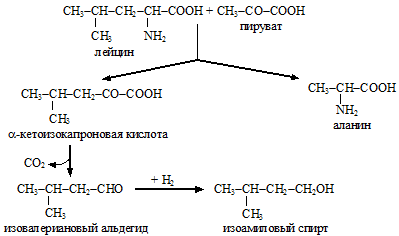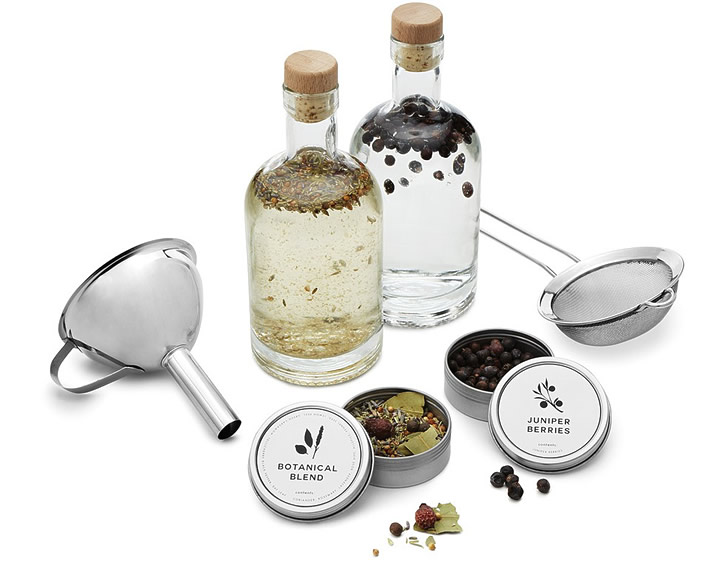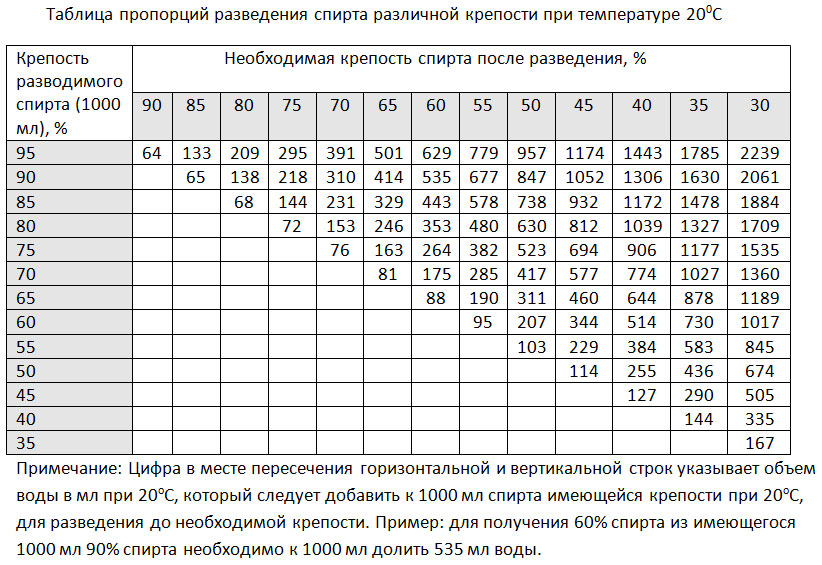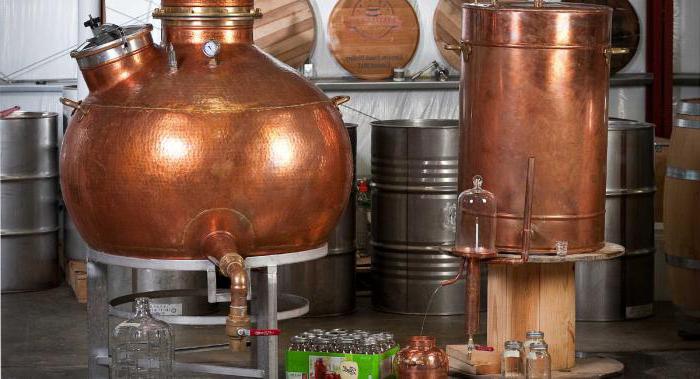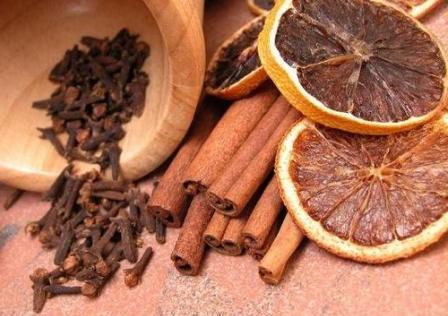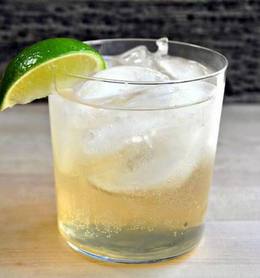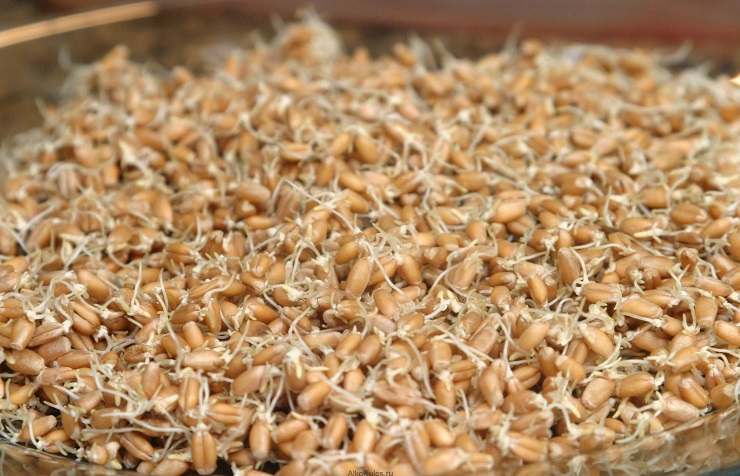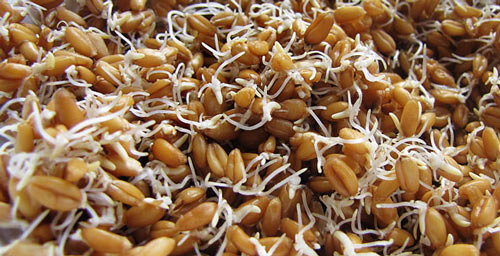Wheat moonshine recipe. How to make moonshine from wheat - from making grain mash to distillation
To make moonshine from wheat with or without yeast is not so much a matter of technology as of taste, because the final quality of the drink remains worthy in any way.
If you want to get wheat moonshine as soon as possible, and the taste of the drink and the smell do not matter, then the yeast technique is exactly what you need.
On the contrary, if there is enough time for cooking, and the aftertaste and aroma come first (the yeast-free recipe gives the smell of freshly baked bread), then grain mash cooked on wheat is the ideal solution.
The most important thing is to approach the work responsibly and strictly follow the technology of preparation, then your drink will successfully pass the stage of fermentation and will delight you with an excellent result! And now - we turn to practice.
The basis for the production of moonshine involves the careful preparation of the main ingredient - grain. There are several important rules for its selection, observing which, mash on wheat will turn out to be of excellent quality. So:
- Raw materials must be clean. No rubbish, bird droppings and other impurities.
- The grains must match each other in size and color.
- Avoid half and damaged grains.
- Pay attention to the smell. High-quality raw materials do not exude aromas of rot and mold.
- Choose wheat strictly by age: it must be at least 2 months old, but not older than 1 year. This will provide her with an active germination.
Old grain, like freshly harvested, sprouts is difficult and, if it is better to completely abandon the first, then there is a way out with the second. Germination of fresh wheat for moonshine will give a good result if the grains are thoroughly dried beforehand.
To do this, you can use the oven (with a temperature of 30 to 40 ° C) or sunny weather. Please note: the oven door must be open, otherwise the grain will dry out.
We pass to the technique of germination:
- Prepare the right amount of clean and warm drinking water (the proportions for the mash on sprouted wheat will be lower in the recipe).
- Rinse the wheat if using the yeast method. Raw materials cannot be washed without adding yeast, otherwise wild yeast will dissolve and wash off the surface.
- Pour the selected grain into a container of suitable size and fill it with water so that it slightly covers the wheat (3 mm will be enough).
- Cover the container with a breathing cloth (previously moistened in water) and leave at room temperature until completely germinated (4 to 5 days, when the sprouts are about 5 mm in length).
- During the germination period, mix the grains daily with a clean large spoon (or any other item that is convenient for you).
Well-sprouted grains are the basis of the leaven, which is responsible for the full ripening of the drink. However, you can make mash on wheat without germination: the process will be long and painstaking, and the quality of the drink is of equal value.
We start cooking mash for moonshine
Braga from wheat is prepared in two stages - this is fermentation and fermentation. It is important to observe the proportions, therefore, we look at the recipe for mash from wheat for distilling moonshine:
- 3 kg of grain + 1 kg of sprouted;
- 5 kg of sugar;
- 20 liters of water.
Before you put the mash, we make the leaven:
- Germinated grains are mixed with 0.5 kg of granulated sugar. Stir until sugar is completely dissolved. Take care not to damage the sprouts. If the mass is too thick to mix, dilute with a small amount of clean water.
- We cover the container with gauze cloth, fix it with an elastic band or a rope to prevent getting into the midges and other insects.
- We put in a warm, darkened place and leave for 7-10 days. Open the container daily and mix the mixture so that it does not become acidic.
Now you can safely proceed to the next stage. So, we make mash for moonshine from ready-made wheat (sourdough):
- First of all, we send the sourdough into a large bottle with a middle neck, where the mash will be infused.
- There we add the remains of sugar, wheat and pour warm water (within 30-35 ° C).
- Wrap the container very tightly with a woolen blanket (everything will work out - from a down jacket to a fur coat, since it is precisely the heat that helps make the mash on wheat, promoting active fermentation).
- We put a rubber glove on the neck, piercing one of its fingers with a thin needle, or a special water lock.
- We place the bottle in a warm place (preferably at normal room temperature).
Braga from wheat without yeast for our moonshine will be infused for 7 to 20 days. The clear color of the liquid, the bitter taste and the fully deflated glove are a signal that the product is ready.
Cooking mash from wheat grains on average fits in 2 weeks. It all depends on the quality of the raw materials and the optimum temperature at which the drink matures, so always be guided by external signs. If your grain sprouts in 2 days, do not wait for the “set” 4 and proceed to the next steps.
The time has come: we look at how to make moonshine on wheat
As soon as the mash on wheat is ready, immediately proceed to distillation, without leaving the mass to wander for longer than expected. The first step is to strain the liquid well using gauze.
The remaining sediments and wheat grains can be reused for fermentation if you want a softer moonshine. In this case, do not drain the water completely so that the grains do not have time to dry out while you are making moonshine.
Before you make homemade moonshine from wheat, get a special cube. Such a device for moonshine can be bought in a store or made independently from various improvised items (pots, jars, etc.) and proceed to distillation - distillation of moonshine.
Here you can do two ways: to carry out simple or fractional distillation. In the first case, you get raw alcohol, the first drops of which retain harmful impurities and give an unpleasant smell to the drink.
Let's say more: not having passed fractional processing, such moonshine contains a fraction of methyl alcohol, various aldehydes and other substances that are very harmful to health.
A full distillation will take almost twice as much time, but the result is worth it: the drink will undergo a complete purification and get a pleasant aroma (regardless of which recipe you used for making moonshine).
Technically, it looks like this:
- Remove the head fraction, that is, the first 10% of the resulting alcohol, without regret. It contains harmful impurities that make the drink unsuitable for drinking. The smell of this "primary" liquid gives away acetone and metal, which spoils the aroma of the final product.
- The tail fraction is similar to the first, since it also spoils the smell of the drink due to the formation of fusel oils. This happens when the temperature in the cube reaches about 92-95 degrees. The selection of the drinking part is completed.
The moonshine made using the right technology is considered the “purest” home-made drink, unlike simple distillation - do not forget about it!
Hop drink recipes
Wheat mash has a sufficient number of recipes, so the field for experiments is wide. Often moonshiners, along with classic recipes, try innovations, partially changing the proportions to their own taste, or make unusual moonshine on kefir.
There are dozens of cooking methods, but not all of them allow you to get a truly worthy drink that your guests will highly appreciate. Therefore, we select the best and more than once proven by experience recipes of moonshine from wheat, which are prepared at home.
Let's start with yeast and wheat mash
Alcoholic yeast almost doubles the fermentation process, since it acts as a powerful catalyst. If you have already prepared wheat moonshine, but without adding yeast, the time difference will certainly be very pleased. So, for yeast moonshine from wheat, we need:
- 5 kg of sugar;
- 250 g of yeast;
- 3 kg of wheat;
- 25 liters of water.
First, we germinate wheat (using the standard technology described above). As soon as the seeds sprout, proceed to the leaven.
Pour water at room temperature into a container with a wide neck (you can use a simple pan). Separately, dissolve the yeast and send it to the water with sugar. Mix thoroughly and send to fermentation.
As soon as the mass is fermented, add the sprouted wheat to it and leave it to complete ripening. Readiness is still determined visually and tasted: the grains settled, the liquid acquired transparency, a bitter taste and smells like alcohol.
The recipe for this wheat mash is distinguished by a characteristic feature: at first, the fermentation of the grain rises up, and at the end, it settles to the bottom. These proportions allow you to get from 7 to 8 liters of high-quality home-made drink of high strength (about 43-48 °).
Next in line is wheat moonshine without yeast
For those who do not want to spend a lot of time on sourdough, they will like mash on wheat without alcohol yeast. To prepare, you will need:
- 5 kg of wheat;
- 6.5 kg of sugar;
- 15 liters of warm water.
To make high-quality moonshine from wheat without adding yeast at home, stick to the following technology:
- In the sprouted grains (all 5 kg) add 1.5 kg of sugar and mix gently, being careful not to damage the sprouts. Pour in water so that the wheat is covered no more than 2 mm. Stir the mixture periodically so that the lower layers do not block.
- As soon as the sprouts appear, the contents must be sent to a large bottle, add the remaining sugar there and pour full amount of water. (Moonshine on sprouted wheat without alcohol yeast has a slight difference: the smell of the drink is many times more pleasant).
- Close the container with a water seal or rubber glove.
- As soon as bubbles cease to form on the surface, check the mass is ready (all the same - by color and taste).
- Pour the ready-made mash into a cube and run it through the apparatus twice.
The recipe for mash on wheat without the participation of “living” yeast will allow you to get about 5-7 liters of moonshine. For more, feel free to double the proportions, but be sure to observe the number of products.
Wheat moonshine without yeast and sugar
This is the most budgetary recipe for moonshine from wheat, although the taste of the drink is not inferior even to “sugar” competitors. The secret ingredient here is ordinary hops, which are successfully used in making wheat mash without yeast and a lot of sugar.
The technology is divided into two stages - steaming and malt. Each of them will require careful attention and diligence, since the process is more time-consuming in contrast to classical recipes.
To park, we need:
- 350-450 g whole wheat flour;
- 2 l of pure drinking water;
- hop cones (2 handfuls of dry or 1 handful of fresh).
What is required for malt:
- 3 kg of wheat grains;
- 6 liters of clean drinking water.
Wheat moonshine without the use of yeast and sugar is very strong and does not contain extraneous odors (including bread flavor). To get exactly such a drink - follow the technology in detail. So:
- Free the grain from extraneous debris and fill it with warm water (with a wheat coating not less than 2-3 cm). Cover with a cotton cloth or gauze with a bandage. Place the container in a warm and dark place for 2-3 days until the foam appears (it means that wild yeast has started to ferment).
- While the grains “fit”, get ready to cook. Pour the prepared flour and hop cones with water, close the lid. Leave for 2-3 days in a warm place.
- Having sustained the specified period, the steaming and malt must be combined in one container and mix well. Since sugar is not part of moonshine, wild yeast will require special nutrition, which activates fermentation. Here you can add pears, apples or sugar beets. Fruits can even be replaced with stale bread (1-2 rye loaves per serving).
- Mix well again and add the remaining water (the balance should be approximately 5 liters).
- We close the bottle with a water lock or a sterile glove, in which we make a hole on one of the fingers with a thin needle.
- We determine the capacity in a warm and preferably dark place until fully ripened (on average, the period takes from 8 to 15 days).
The readiness of the mash is determined by the same method: we look at the color of the product and evaluate the quality of the taste. Once the fermentation is over, you can proceed to distillation. Moonshine on wheat, although without the addition of sugar, it is important to overtake 2 times (according to standard technology). So you get a clean drink without odors.
Original moonshine from wheat on kefir
Sprouted corn on the basis of sprouted wheat with the addition of sour-milk products gives special softness and delicate aroma to home-brew. Even if you are not a fan of experimenting with tastes, this masterpiece is worth a try!
So we need:
- 2.5 kg of wheat;
- 100 g of dry yeast;
- 6 kg of sugar;
- 20 l of pure water;
- 2 cups kefir or fermented baked milk.
In this recipe, the age of the grains is important, so use wheat that has recovered for at least 3 months. In extreme cases, you can put moonshine on fresh wheat as well, but the end result risks being slightly lower.
How to make a mash of wheat grains with kefir:
- We grow raw materials according to standard technology. The only difference is the size of the sprouts, which should reach from 1 to 2 cm in length.
- The finished grain is very intertwined, but it’s not scary: you do not need to unravel anything. Wheat can be used immediately, or dried well and ground into flour.
- Transfer the grains (or flour from them) into a large bottle, add sugar, warm water and yeast. Mix well.
- Install a water seal on the neck or put on a glove (do not forget to make a hole with a needle on one of its fingers). Place the bottle in a warm and dark place for 14 days. Make sure that a minimum of light enters the place where the container is standing.
- At the end of the fermentation step, it is necessary to add kefir (fermented baked milk) to the mass and send the drink to distillation.
When the moonshine is ready, measure the level of the fortress and, in case of an excessively high degree, dilute with a small amount of clean water and let it settle for another 3 days.
In theory, moonshine on wheat is prepared very simply, but when it comes to practice, sometimes unforeseen situations arise. Most often, they are waiting for newcomers to this business who have not yet had time to gain comprehensive experience. We give the most common examples and tell you what to do in such cases:
- After the allotted time, the wheat did not germinate. There is no point in waiting for the shoots after 5 days, so get rid of these grains and stock up on others. Most likely they were of poor quality or you did not guess with age (too old / fresh crop).
- When fermenting through a bottle, no sprouts are visible. There is nothing wrong with this, since the process itself is the determining link at this stage: if the air goes in bubbles, and the grains “walk” through the tank, then everything is in order.
- If fermentation has stopped and after 2 days has not resumed, you can get rid of the starter culture. Unfortunately, something went wrong and the yeast stopped working.
- The consistency of mash reminds jelly. This is also not scary, since the mass of a lot of starch. Just mix the mixture every day, shaking occasionally.
- If you decide to replace sugar with honey or jam, pay attention to the proportions - they will also change. For example, about 1 liter of honey will require about 7 liters of water (sugar is 2 times less).
We conclude our review with a useful note on the preparation of malt, which will help give the drink the desired taste:
- green wheat malt gives moonshine softness and a sweetish flavor;
- rye malt makes the drink tougher;
- barley malt is somewhat reminiscent of whiskey.
By the way, the types of malt can be mixed and used in one recipe. Therefore, having gained experience in the technique of making moonshine, you can safely experiment with tastes and surprise your guests!
The eighties for many people in the USSR became very sad. All alcohol on sale was banned - not a hundred grams from a regular drink, nor a holiday is fun to celebrate. But the wise villagers came up with a way out - they began to prepare moonshine. However, a problem arose here - sugar deficiency, without which distillation was impossible. Then they came up with the idea of \u200b\u200bmaking moonshine from wheat at home. The taste of this drink, following the technology, is very good, the output price is minimal, and all the ingredients are natural. By the way, such moonshine also boasts a wonderful fortress. Now they are practically not engaged in home brewing. However, there are true connoisseurs of this drink. They lovingly continue the work of their grandfathers.
There are a lot of recipes for moonshine from wheat. What unites them is only the requirements for basic raw materials. Wheat should be:
- clean
- dry;
- without the presence of pests;
- not pretty.
Cooking technology
If you decide to put moonshine on wheat, then you have to choose a method of production. So, it can be done with or without yeast, adding granulated sugar or neglecting this ingredient. Wheat is taken either ordinary or sprouted.
The most important steps:
- Selection and purification of raw materials.
- Making mash.
- Distillation.
- Cleaning moonshine.
To understand which method suits you, it is advisable to try to make a drink according to all recipes.
Moonshine on wheat - cook without yeast
This option is very popular. It differs from others in that the output is the most natural product.
Recipe
First you need to prepare the raw materials. Take 5 kg of wheat and sift it so that the fraction remains clean (impurities and dust are removed). Grains need to be filled with warm water so that it slightly hides the top layer.
Add 1.5 kg of granulated sugar to the wheat mass. Place the container in a warm place. Now you need to sprout wheat for moonshine. If you did everything right, then soon you will see the first young shoots.
As soon as the seeds have sprouted, add 15 liters of water and 5 kg of granulated sugar to the container. If the old capacity allows, then you can do it in it. Otherwise, take the container deeper, with a narrow neck. Set and leave the mass in a warm place for 10 days.
At the end of this time, wheat mash without yeast is considered finished. It can be sent to the moonshine for distillation. After the first distillation, purify the alcohol. Most often, activated carbon is used in this case. 50 g of powder obtained from crushed tablets are taken per liter of liquid. Pour it into moonshine and leave it for a week. Filter the drink and send to secondary distillation.

Yeast brewing
There are 2 options for making mash for distillation.
1 way
Grind 4 kg of refined wheat into flour. Add the following ingredients to it: 100 g of yeast, 1 kg of sugar, 3 liters of water. Mix the mass very carefully, install a water seal. Place the container for a week in a warm and dark place. After 7 days, filter the mass. Now it should be overtaken and cleaned. This is followed by a second distillation.
2 way
Take 2 kg of sifted wheat. Pour 2 liters of warm water. Leave for 3 days in a dark and warm place. Grains should germinate during this time. Take a large pan and heat 15 liters of water in it to 50 degrees. Enter 5 kg of granulated sugar in a container. Cool the water to 35 degrees and add 100 g of yeast and wheat. Stir the mass and put in a warm place for 15 days. So you can track the fermentation process, equip your tank with a water seal. Wrap the container with a warm blanket. After the active fermentation takes place, filter the mass. Braga is ready for further distillation.
Sprouted Moonshine

To prepare a great drink, you need to prepare it, observing all the technology. In addition, there are some tricks that will be very useful to you in the process of home brewing. For example, some make alcohol from wheat without sugar. We will not consider such a method, since there is no shortage of granulated sugar in our country, and a drink without this ingredient is not so tasty. So, consider the technology in detail.
We will need:
- 2, 5 kg of grain;
- 20 l of soft water;
- 100 grams of dry yeast;
- 6 kg of sugar;
- 0, 5 liters of fermented baked milk or kefir.
Proper Wheat Preparation

To get good moonshine, you need to take the grain that has recovered. It must be kept in stock for at least 2 months. Only harvested wheat will give the worst result.
It is best to make alcohol from germinated wheat. Therefore, spread your grain on a pallet and fill it with warm water. Do not use boiling water or cold water. Provide germination conditions for grain: heat and a dark room. After 2-3 days, the first sprouts will appear. If this does not happen, then your grain has "died" and is not suitable for home brewing.
Wait until the sprouts become large - 1-2 cm in length. Remove the raw materials from the pallets. Unraveling the shoots should not be done. The raw materials can be used immediately, but you can dry it and grind.
Making a mash
Wheat mash is very simple to make. Enter warm water, granulated sugar, yeast (without them), grain (flour from it) into the container. Install a water seal and send the container to a warm place for 2 weeks. Limit light access to the room with the Braga.
Cooking moonshine
After fermentation, the liquid must be carefully filtered and add fermented baked milk or kefir to it. They will relieve your drink of fusel oils by 70%. Now you need to distill.
Cleaning
There are a lot of ways to purify moonshine. In this case, it is best to clean with activated, charcoal or coconut. And how to do this, you can.
Second distillation
It is carried out if you want to make moonshine really high quality. Dilute alcohol with soft water in a 1: 1 ratio. Now re-distill the drink. The first 50 g per 1 liter must be drained. Then they continue to collect moonshine until its strength drops below 40 degrees.
Finishing touches
When you distill the entire drink, check its strength. If it is great - it does not matter. Add water to the brew and leave to insist for three days. After that, you can set the table and try the resulting masterpiece.
Wheat? ideal raw material for homemade vodka. Properly prepared, chased and refined wheat moonshine is soft, easy to drink without fusel odor and yeast flavor.
How to close up mash on wheat grain
Wild Yeast Mash Recipe:
What do you need:
- sugar -10 kg;
- water - 35 liters;
- wheat? 6 kg
Is sugar better to take unrefined? yellow? it has more sweetness than refined. Water to stand for 2-3 days. Wheat grains use premium. It is better to take one tank under the brew, but of a large volume. Instead of part of the sugar, you can use part of the jam, resulting in moonshine with a different taste.
- Rinse the grains well. Take out the trash. You can use gauze for convenience, laying it under the product.
- Sprinkle wheat with a thin layer up to 5 cm along the bottom of a wide container. You can use a 10 liter bottle, laying it on its side. Pour the grain with cold settled water to cover the top layer by 2-4 cm.
- Put in a dark place for germination, shaking the container daily, so that the swelling grain is evenly moistened with water.
- Germination cease when the green sprouts of wheat reach a length of 0.5? 1 cm
- Mix the leaven with 2 kg of sugar, add a little water and put in a warm place for fermentation for 7-10 days.
- Then add all the ingredients, heating the water to a temperature of 20-24 ° C, which is most suitable for the fermentation process.
- A signal that it is time to drive moonshine is the settling of sprouted wheat grains to the bottom.
- It is recommended to carefully drain the mash from the sediment with wheat, which can be used 3-4 more times, adding water and adding sugar.
- When filling a new portion, the wheat grain rises to the surface and settles when the mash is ready.
Making a Yeast Drink
Moonshine, sealed from wheat with the addition of yeast, is prepared in the same way, skipping the process of making yeast. Germinated grains can be used 3-4 times without adding yeast.
You can make an excellent alcoholic drink from whole wheat flour without adding sugar, based on the fact that 1 kg of wheat corresponds to 800-900 ml of moonshine with a strength of at least 40 °.
Divide the cooked grain in a ratio of 1: 9, from one  parts of which it is necessary to prepare malt milk, and from the remaining part, grind coarse flour. You can crank the raw materials through a meat grinder.
parts of which it is necessary to prepare malt milk, and from the remaining part, grind coarse flour. You can crank the raw materials through a meat grinder.
Homemade malt
How to make milk from malt:
- sprout wheat to form sprouts and roots from 1.5 to 2 cm;
- thoroughly rinse the grain with sprouts and dry in the oven, maintaining the temperature not higher than 40 ° C, with the door open;
- grind malt in a meat grinder or coffee grinder;
- 150-200 g of dry malt need to add 0.5 liters of hot? 50-60 ° C? water in 2 doses with an interval of 2 hours.
How to close flour mash
Braga from flour:
- to prepare a solution of flour with water per 1 kg of flour? 1.5 liters of water. Stir with a construction mixer until smooth. Water temperature for pouring? 40-45 ° C;
- heat the mixture to a temperature of 50-55 ° C, and after waiting 20 minutes, continue heating to 70-75 ° C, at which starch is saccharified. After the process, the liquid becomes brownish, sweetish aftertaste and bread smell;
- add the same amount of water to the mash, cooling it to 20-24 ° C, hold it by covering the container with a warm blanket for 3 days and add yeast? 50 g for every 1 kg of flour;
- the end of fermentation can be checked by a burning match, which will continue burning at the very surface of the liquid;
- carefully drain the mash from the sediment and overtake in the apparatus twice to remove an unpleasant odor.
How to replace sugar
Moonshine from cereals can be made with the addition of jam, replacing them with part of the sugar. It should be borne in mind that a sweet product, slightly fermented, contains yeast, the amount of which must be reduced in the main recipe. The fermentation rate also increases, the wort can quickly gain acid, which affects the taste of the final product.
Moonshine after distillation acquires the aroma of berries or fruits, which are part of the jam.
The finished drink can be sweetened, improving its taste, using jam, which is added to the finished product.
Homemade Vodka Cleansing
Moonshine is cleaned in several stages:
- In the process of distillation, a watering can with a piece of cotton wool on the sink is placed on the jar, which is recommended to be changed as it becomes dirty.
- Activated carbon cleaning is recommended when the moonshine is completely expelled. The dose is calculated: 1 tables are used per 1 liter of alcoholic drink. spoon of coal.
- During the production of moonshine, the first and last parts, the most contaminated with fusel oils, are selected.
- The second and third, if necessary, distillation significantly improves the quality and taste of homemade vodka.
At home, you can use any products that can be fermented. Instead of sugar, cereals, flour, starch, jam are used.
Experienced moonshiners know that grain moonshine is much better than regular sugar mash. But for its preparation will have to spend more time and effort. We will consider how to make moonshine from wheat or other cereals (barley, oats, millet or corn) at home. The technology is not very complicated, anyone can repeat it.
First, we will understand the taste of grain moonshine, it depends on the choice of culture. Wheat makes a soft drink. Strong and sharp moonshine can be driven out of rye; something similar to whiskey comes out of barley. The choice of raw materials is yours. Personally, I prefer wheat.
Ingredients:
- grain - 2.5 kg;
- water - 25 liters;
- sugar - 6 kg;
- dry yeast - 100 grams (or 500 grams of pressed);
- fermented baked milk (kefir) of high fat content - 0.5 liters.
Before soaking, the grain must lie for at least 2 months. It is better to use alcoholic yeast rather than baking yeast, then fermentation will be more intense. Sugar increases yield without compromising quality.
Wheat moonshine recipe
1. Preparation of malt. Lay the wheat in a layer of no more than 2 cm on flat pallets, then soak in warm water. Water should only slightly cover the grain, otherwise it will not germinate. Place the pallets in a warm (18-25 ° C) dark place.
On the second or third day after soaking, the first sprouts will appear. If they are not, then the grain is of poor quality and you have to take another. During germination, turn the wheat once a day so that it does not mold and does not acidify.
When the sprouts reach 2 cm in length and begin to intertwine with each other, remove the grains without separating them from the water.
 Wheat germination
Wheat germination 2. Cooking mash. Add warm water (50-60 ° C) and sugar to a 40 liter container. Mix well. Wait until the water has cooled to 28-30 ° C. Then add the malt made in the previous step and the yeast diluted according to the instructions on the package. Mix again, and then install a water seal on the container. During fermentation, the room temperature should be in the range of 18-28 ° C.
3. Distillation. To play the brew (it will be bitter in taste without sweetness) strain through a colander to filter the wheat. Harvested grain can be used another 2-3 times. The quality of moonshine will not deteriorate.
Add 0.5 liters of kefir or other sour-milk product to the wheat mash to eliminate fusel odor.
Distill the mash on a moonshine of any design, selecting distillate, until the fortress in the stream drops below 35 degrees.
4. Cleaning. An optional step, but many experienced moonshiners after distillation clean the moonshine with coal, even if it is not from sugar, but from grain crops.
5. Re-distillation. Improves the quality of wheat moonshine. Measure the strength, determine the amount of pure alcohol. Dilute the distillate with water to 20% and overtake a second time. Drain the first 8-15% of the amount of pure alcohol into a separate container. This is a harmful fraction that degrades the taste. If the fortress in the stream falls below 40 degrees, complete the selection of the main fraction.
Experienced moonshiners know that grain moonshine is much better than regular sugar mash. But for its preparation will have to spend more time and effort.
We will consider how to make moonshine from wheat or other cereals (barley, oats, millet or corn) at home. The technology is not very complicated, anyone can repeat it.
First, we will understand the taste of grain moonshine, it depends on the choice of culture. Wheat makes a very soft and even slightly sweet drink. Strong and sharp moonshine can be driven out of rye; something similar to whiskey comes out of barley. The choice of raw materials is yours. Personally, I prefer wheat.
Composition:
Grain - 2.5 kg;
· Water - 20 liters;
Sugar - 6 kg;
Dry yeast - 100 grams (or 500 grams of pressed);
· Fermented baked milk (kefir) of high fat content - 0.5 liters.
Before soaking, the grain must lie for at least 2 months. It is better to use alcoholic yeast rather than baking yeast, then fermentation will be more intense.
1. Preparation of malt. Lay the wheat in a layer of no more than 2 cm on flat pallets, then soak it in warm water. Water should only slightly cover the grain, otherwise it will not germinate. Place the pallets in a warm (18-25 ° C) dark place.

On the second or third day after soaking, the first sprouts will appear. If they are not, then the grain is of poor quality and you have to take another. During germination, the wheat is turned over once a day so that it does not mold and does not acidify.
When the wheat sprouts reach 2 cm in length and begin to intertwine with each other, they must be removed from the water without separation.
2. Cooking mash. Add warm water (50-60 ° C) and sugar to a 40 liter container. Mix well. Wait until the water has cooled to 28-30 ° C. Then add the malt made in the previous step and the yeast diluted according to the instructions on the package. Mix again, and then install a water seal on the container.
3. Distillation. Strain the wicked mash through a colander to filter the wheat. Harvested grain can be used another 2-3 times. The taste of moonshine will not change.

Add 0.5 liters of kefir or other dairy product to the wheat mash. This is to ensure that there are fewer fusel oils in the final product.
Distill the mash on a moonshine of any design, taking away the distillate until its strength drops below 35 degrees.
4. Cleaning. This stage can not be called mandatory, but many experienced moonshooters after distillation clean the moonshine with coal, even if it is not from sugar, but from grain crops.
5. Re-distillation. Improves the quality of wheat moonshine. Dilute the distillate with water by 50% and overtake a second time. The first 30-50 ml per 1 liter of moonshine should be drained into a separate container.
For example, with 3 liters of raw alcohol, 150 ml of the output must be collected separately. This is a harmful fraction that degrades the taste. When the fortress falls below 40 degrees, the selection of the main fraction is completed.
It is better to distill wheat moonshine twice
6. Dilution. Dilute the obtained moonshine of the second distillation with water to the desired strength (usually 40-45 degrees). Before use, it is advisable to let it brew for 2-3 days.
On this, the process of preparing grain moonshine ends. The result is 5-6 liters of the finished product with a strength of 40 degrees.

P.S. If there is no desire to engage in the germination of cereals, I can offer another recipe for moonshine from wheat. This drink is called homemade bread vodka, during its preparation, the grain is immediately added to the fermentation tank.
The only drawback of this method is that the output is too small. It turns out half the moonshine than from germinated wheat.

Definitions of Mash Prep
To get high-quality moonshine, it is important to learn how to correctly determine the moment when the mash is ready for distillation. If you start distillation earlier, the yield will be less and some of the sugar just disappears.
Along with this, you can not overexposure the mash, otherwise it will begin to turn sour, which will worsen the taste of moonshine.
We will consider all the available methods that allow you to check your brew for readiness. To improve accuracy, I recommend using it comprehensively, that is, all at once (except for the latter).

1. Time. Depending on the quality of the raw materials (sugar, yeast, water) and external conditions (temperature, humidity), ordinary sugar mash wanders from 5 to 14 days, an average of 7-10 days, starch less than 3-5 days.
Grape Braga without yeast for ripening needs from 21 to 28 days. Due to the large time spread, this method is too inaccurate to rely on.
2. Taste. Ready to distill mash has a bitter taste. If you feel the sweetness, it means that the yeast has not yet processed all the sugar into alcohol and you need to wait.
This is the most effective verification method that allows you to control not only the readiness, but also the quality of the mash.

If the temperature is not observed (the optimum temperature of the mash is 18-24 ° C), the yeast can die ahead of time, as a result of which the fermentation will stop even before the complete production of sugar.
3. Appearance. Foam ceases to form in the finished brew, carbon dioxide bubbles do not stand out and no hiss is heard. The upper layer of mash begins to lighten gradually, the remains of yeast and their waste products settle at the bottom.
4. A lit match. With active fermentation, a large amount of carbon dioxide is released, which displaces oxygen from the tank. To determine the readiness of the mash, just bring a lit match to the surface.
If it burns, then fermentation has stopped and distillation can begin. Match attenuation indicates that fermentation is still ongoing.
5. Professional method. The most accurate, but requires a special device - a hydrometer, which only experienced moonshiners have.

To determine the residue of sugar (bad), 200 ml of mash is filtered through a dense cloth, poured into a measuring cup and the hydrometer is lowered there. At values \u200b\u200bbelow 1.002 (corresponding to 1% sugar in the Braga), distillation can begin.
Improving moonshine by repeated distillation
Repeated distillation of moonshine removes foreign impurities, improving its quality. The people call the final product "double moonshine."
Although it will take 2-3 hours more time to cook it, in the end you will get a crystal clear, soft odorless distillate.
Secondary distillation lends itself to any moonshine, regardless of the raw materials.
The recipe for mash and your chosen distillation technology (moonshine) do not change. You can even ennoble a drink driven out much earlier.

